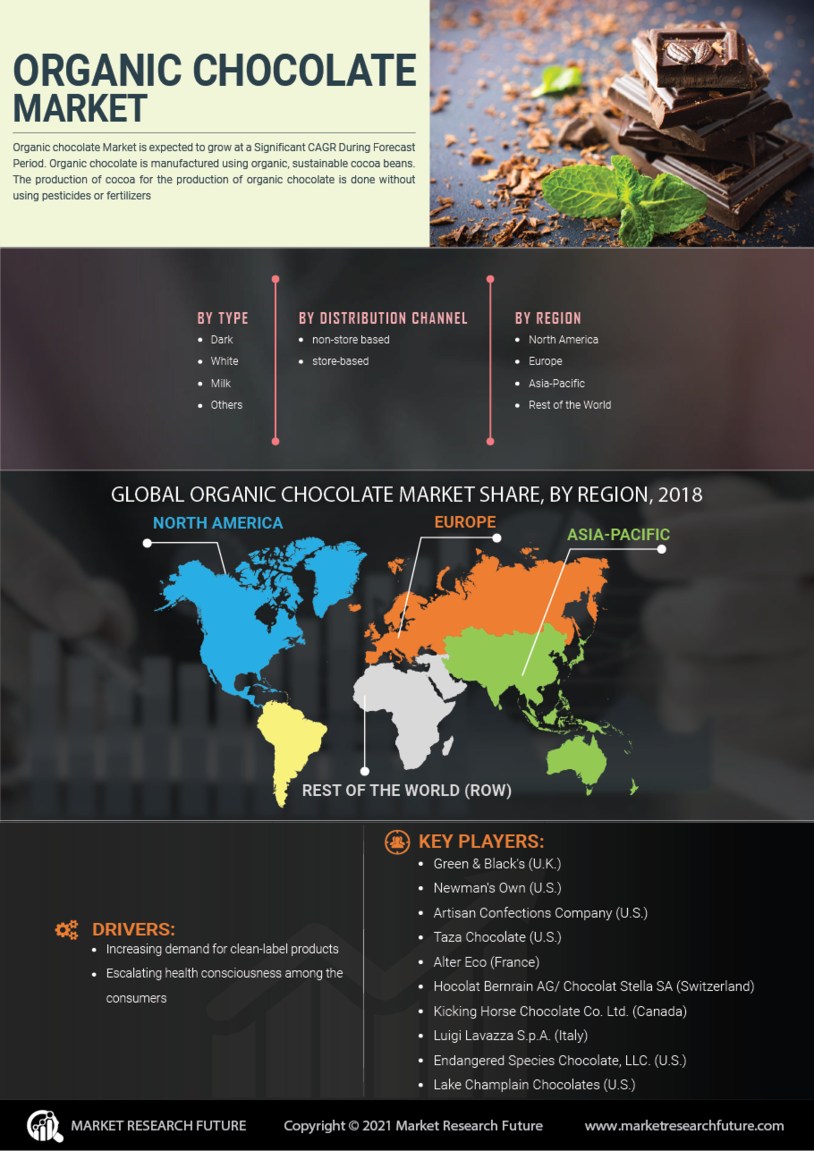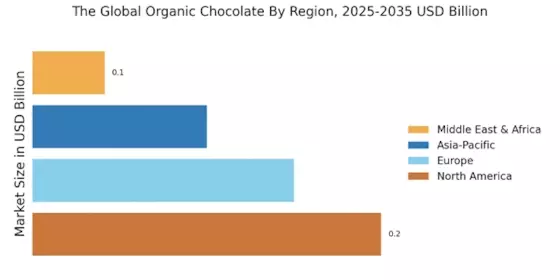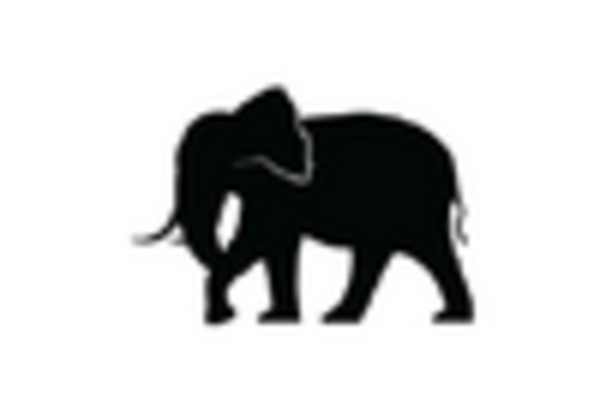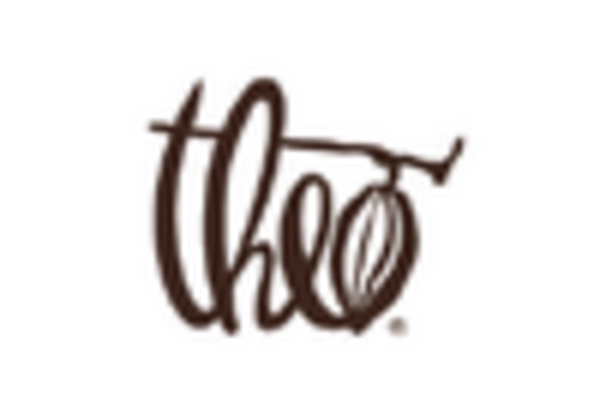The Global Organic Chocolate Market is currently characterized by a dynamic competitive landscape, driven by increasing consumer demand for sustainable and ethically sourced products. Key players are actively engaging in innovative strategies to enhance their market presence and operational efficiency. Companies such as Alter Eco (CH), Green & Black's (GB), and Theo Chocolate (US) are at the forefront, focusing on product innovation, sustainable sourcing, and expanding their distribution channels. This collective emphasis on sustainability and ethical practices not only shapes their individual strategies but also influences the broader market dynamics, fostering a competitive environment that prioritizes quality and environmental responsibility.
In terms of business tactics, companies are increasingly localizing manufacturing to reduce carbon footprints and optimize supply chains. The market structure appears moderately fragmented, with several key players holding substantial market shares while numerous smaller brands contribute to the diversity of offerings. This fragmentation allows for niche players to thrive, particularly those that emphasize organic and fair-trade certifications, thereby enhancing the overall competitive landscape.
In August 2025, Alter Eco (CH) announced a partnership with local farmers in Ecuador to enhance the traceability of their cocoa supply chain. This strategic move not only strengthens their commitment to sustainability but also ensures that farmers receive fair compensation, thereby fostering community development. Such initiatives are likely to resonate with environmentally conscious consumers, positioning Alter Eco as a leader in ethical chocolate production.
In September 2025, Theo Chocolate (US) launched a new line of organic chocolate bars infused with superfoods, aiming to cater to health-conscious consumers. This innovation reflects a growing trend towards functional foods, suggesting that Theo Chocolate is keen on tapping into the wellness market. By diversifying their product offerings, the company may enhance its competitive edge and attract a broader customer base.
In July 2025, Green & Black's (GB) expanded its distribution network by entering into a strategic alliance with a major online retailer, significantly increasing its market reach. This move indicates a shift towards digital transformation in the organic chocolate sector, as companies recognize the importance of e-commerce in reaching consumers. Such partnerships are likely to enhance brand visibility and accessibility, further intensifying competition in the market.
As of October 2025, the competitive trends in The Global Organic Chocolate Market are increasingly defined by digitalization, sustainability, and the integration of advanced technologies. Strategic alliances are becoming pivotal in shaping the current landscape, allowing companies to leverage each other's strengths. Looking ahead, it appears that competitive differentiation will evolve from traditional price-based competition to a focus on innovation, technological advancements, and supply chain reliability, as companies strive to meet the growing expectations of discerning consumers.


















Leave a Comment